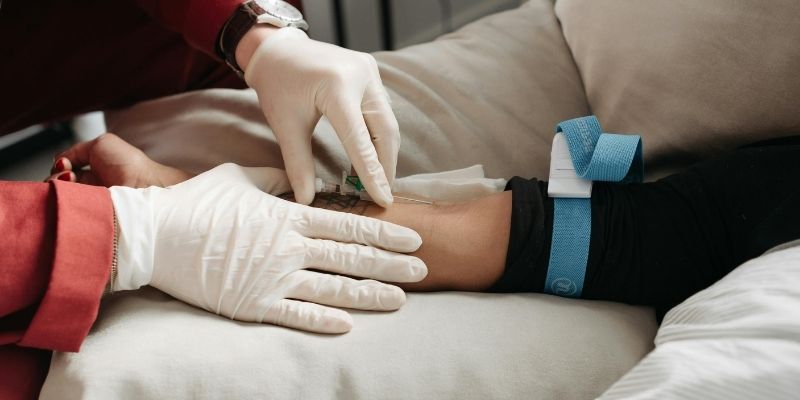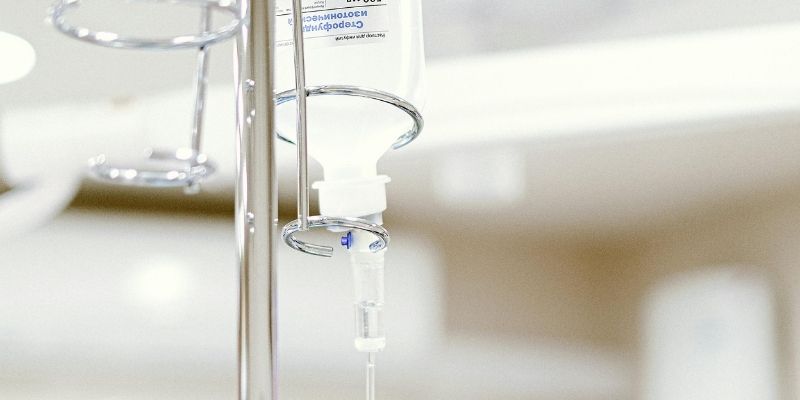Top Strategies for Treating Osteomalacia Naturally and Medically
Advertisement
Osteomalacia is a pathological state of poorly mineralized bone felt due to Vitamin D deficiency or by other causes and this when left untreated causes bone pain, increased bone fragility and risk of fractures and muscle weakness. It mostly occurs in adults and is due to a decreased efficiency in mineralisation of bone tissue, which can be due to deficiency of vitamin D, calcium or phosphate. It is very important to learn all the treatments that exists for a patient with osteomalacia to ensure that the symptoms are well treated to enhance bone health.
1. Vitamin D Supplementation
A deficiency in vitamin D, a vital nutrient for bone health, is one of the primary causes of osteomalacia. Vitamin D plays a key role in helping the body absorb calcium and phosphate—minerals essential for maintaining strong, healthy bones. Without sufficient vitamin D, bones can become soft, weak, and brittle.
Natural Sources of Vitamin D:
Sunlight is the most effective natural source of vitamin D, but several foods can also help boost your intake, including:
- Fatty Fish: Salmon, mackerel, and sardines are excellent sources of vitamin D.
- Egg Yolks: A simple and accessible way to add vitamin D to your diet.
- Fortified Foods: Many dairy products, cereals, and plant-based milks are enriched with vitamin D to help meet daily requirements.
Vitamin D Supplements:
Many times, people with osteomalacia or even people who are confined indoors most of the time or people with digestive tract problems that hinder them from absorbing food vitamins well require supplements. They comprise of vitamin D2 (ergocalciferol) and vitamin D3 (cholecalciferol). However, health advice should be sought regarding the correct dosage because having more than the recommended amount is potentially toxic.
2. Calcium and Phosphate for Bone Health

Calcium and phosphate are essential minerals that play a critical role in maintaining strong, healthy bones. A deficiency in either can increase the risk of developing osteomalacia, a condition that weakens bones. When your diet falls short, supplementation may be necessary to ensure your bones receive these vital nutrients.
Boosting Calcium Intake:
Incorporating calcium-rich foods into your diet is a key step in preventing or managing osteomalacia. Excellent sources of calcium include:
- Dairy Products: Milk, cheese, and yogurt are classic choices packed with calcium.
- Leafy Greens: Vegetables like kale, bok choy, and broccoli offer plant-based calcium options.
- Fortified Foods: Many plant-based milks and breakfast cereals are calcium-fortified, making them convenient additions to your diet.
Enhancing Phosphate Levels:
Phosphate is equally important for bone health, and it's found in a variety of foods. To support strong bones, consider adding these phosphate-rich options to your meals:
- Meat and Poultry: Chicken, turkey, and beef are excellent sources.
- Fish: Salmon, tuna, and other seafood offer both phosphate and other beneficial nutrients.
- Legumes: Lentils, chickpeas, and beans provide a plant-based source of phosphate.
- Dairy Products: Milk, yogurt, and cheese deliver both calcium and phosphate, making them doubly beneficial.
3. Weight-Bearing Exercise
Engaging in regular exercise is vital for maintaining strong, healthy bones. Weight-bearing exercises, which involve activities like standing, walking, or moving against gravity, are especially effective in stimulating bone growth and improving bone mineral density.
Recommended Weight-Bearing Exercises:
Here are some excellent weight-bearing exercises for individuals managing osteomalacia:
- Walking or Jogging: These low-impact activities help build both bone strength and muscle endurance.
- Strength Training: Lifting weights or using resistance bands can significantly enhance bone density and overall bone health.
- Dancing and Hiking: These enjoyable activities combine weight-bearing benefits with cardiovascular fitness, making them both fun and effective.
4. Sunlight: A Natural Remedy
One of the most effective and natural ways to combat osteomalacia is through regular exposure to sunlight. Sunlight stimulates the body to produce vitamin D, a crucial nutrient for absorbing calcium and phosphate.
How to Maximize Sunlight Benefits?
To ensure you’re getting enough sunlight, follow these simple guidelines:
- Daily Exposure: Spend 15 to 30 minutes each day letting the sun hit your face, arms, and legs. This brief time outdoors can significantly boost your vitamin D levels.
- Optimal Timing: Aim for sunlight exposure between 10 a.m. and 4 p.m., as this is when the sun’s rays are most effective for vitamin D production.
5. Treating Osteomalacia with Bisphosphonates
For individuals experiencing severe bone weakness or fractures due to osteomalacia, bisphosphonates may be a viable treatment option. These medications are designed to preserve bone density and lower the risk of fractures by reducing bone resorption.
How Do Bisphosphonates Work?
Bisphosphonates target osteoclasts—the cells responsible for breaking down bone tissue—effectively slowing the process of bone loss. By inhibiting osteoclast activity, these medications allow osteoblasts, the bone-forming cells, to function more efficiently. This leads to stronger, denser bones over time.
Commonly prescribed bisphosphonates for osteomalacia include:
- Alendronate
- Risedronate
- Zoledronic Acid
6. Hormone Replacement Therapy (HRT)
Hormone Replacement Therapy (HRT) is sometimes recommended as a treatment for osteomalacia, particularly in postmenopausal women. Estrogen, a critical hormone for maintaining bone density, declines significantly after menopause, which can contribute to bone thinning and osteomalacia.
Benefits of HRT
HRT works by restoring estrogen levels, offering several benefits for bone health:
- Enhancing bone mineral density.
- Lowering the risk of fractures.
- Supporting the absorption of calcium and phosphate.
7. The Role of Magnesium in Bone Health
Magnesium is a vital mineral that plays a key role in maintaining strong, healthy bones. It facilitates the activation of vitamin D, which is essential for calcium absorption and bone formation. A lack of magnesium can worsen the symptoms of osteomalacia and weaken overall bone health.
Boosting Magnesium Intake:
Looking to boost your magnesium levels naturally? Try adding these delicious, nutrient-packed foods to your plate:
- Nuts and Seeds: Crunchy almonds, creamy cashews, or flavorful pumpkin seeds—perfect for snacking!
- Whole Grains: Nutty quinoa, hearty brown rice, or wholesome whole wheat bread to keep you energized.
- Leafy Greens: Vibrant spinach, nutrient-rich kale, or tender Swiss chard—your body will thank you!
8. Managing Risk Factors

Lifestyle choices play a significant role in the development and treatment of osteomalacia. Addressing and minimizing these risk factors is essential for effective recovery and bone health.
Key Risk Factors to Address:
- Smoking: Smoking inhibits calcium absorption and increases the likelihood of bone fractures. Quitting is a crucial step toward stronger bones.
- Sedentary Lifestyle: Physical inactivity contributes to muscle weakness and fragile bones. Incorporating regular exercise can help maintain bone strength and overall health.
Conclusion:
Osteomalacia is a serious bone condition that can result in pain and fractures, but effective treatments are available. Addressing the condition involves ensuring sufficient levels of vitamin D, calcium, and phosphate through diet, supplements, or medical intervention. Weight-bearing exercises, lifestyle adjustments, and medications like bisphosphonates can also play a vital role in strengthening bones and preventing complications.
On this page
1. Vitamin D Supplementation Natural Sources of Vitamin D: Vitamin D Supplements: 2. Calcium and Phosphate for Bone Health Boosting Calcium Intake: Enhancing Phosphate Levels: 3. Weight-Bearing Exercise Recommended Weight-Bearing Exercises: 4. Sunlight: A Natural Remedy How to Maximize Sunlight Benefits? 5. Treating Osteomalacia with Bisphosphonates How Do Bisphosphonates Work? 6. Hormone Replacement Therapy (HRT) Benefits of HRT 7. The Role of Magnesium in Bone Health Boosting Magnesium Intake: 8. Managing Risk Factors Key Risk Factors to Address: Conclusion:Advertisement












